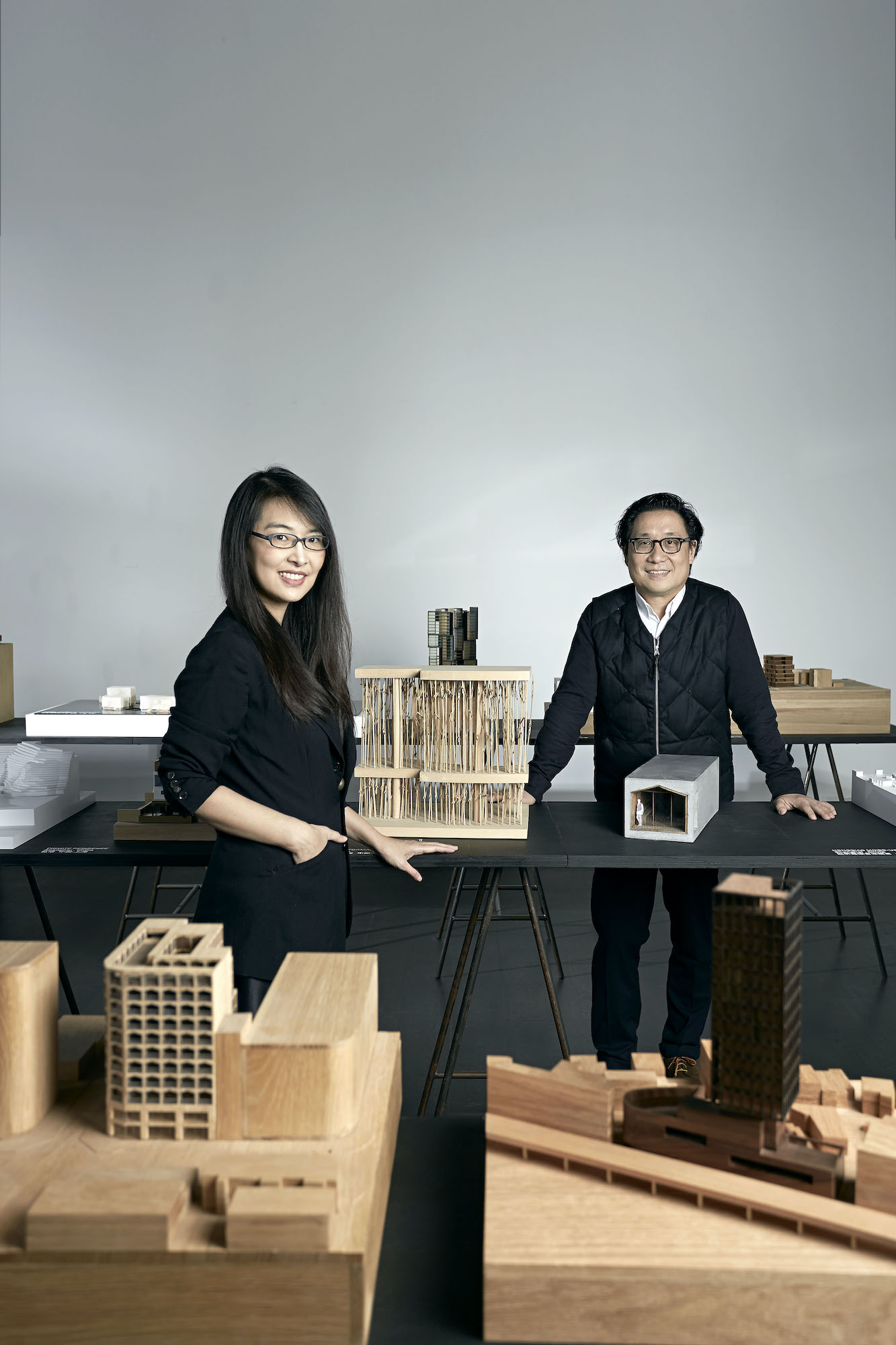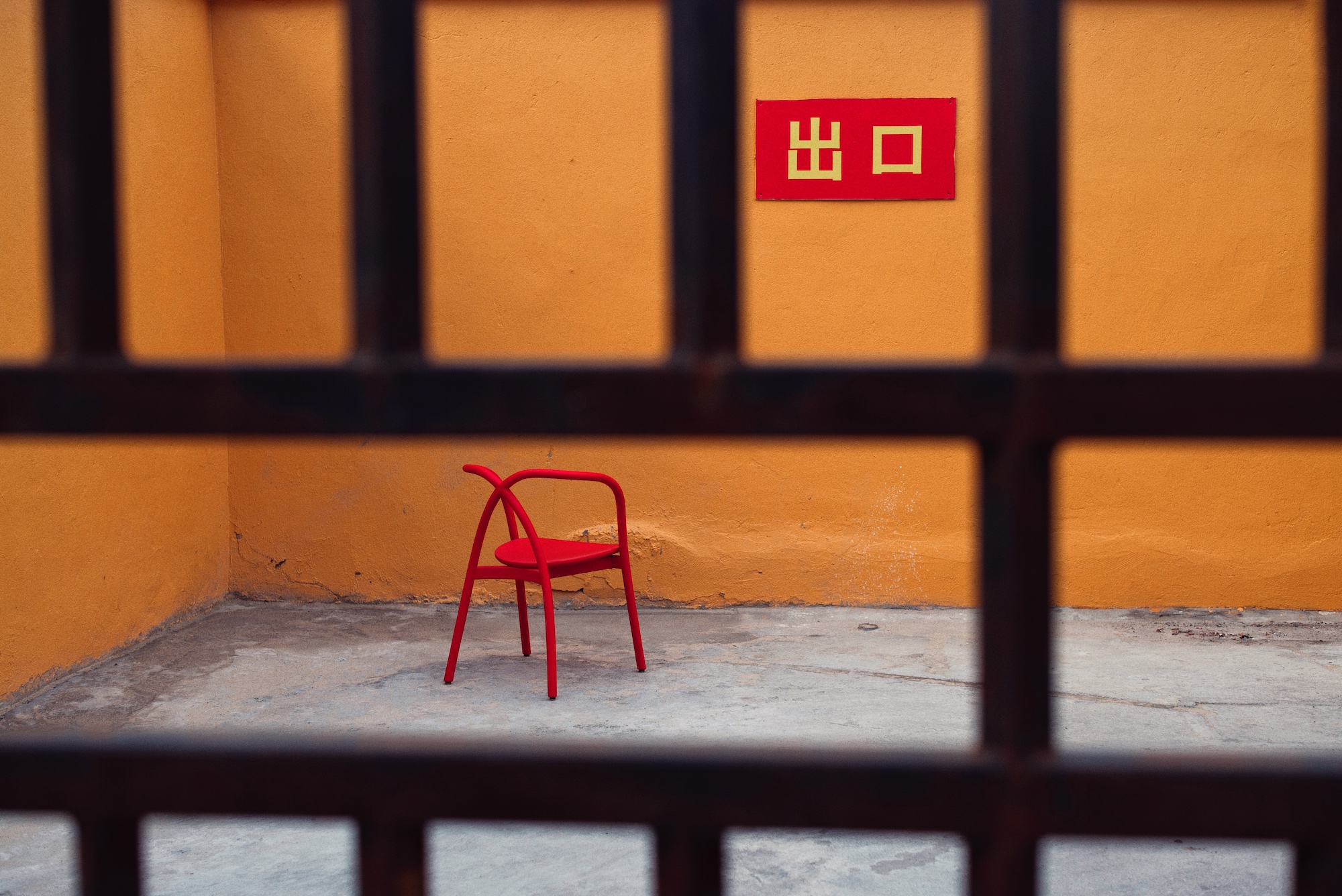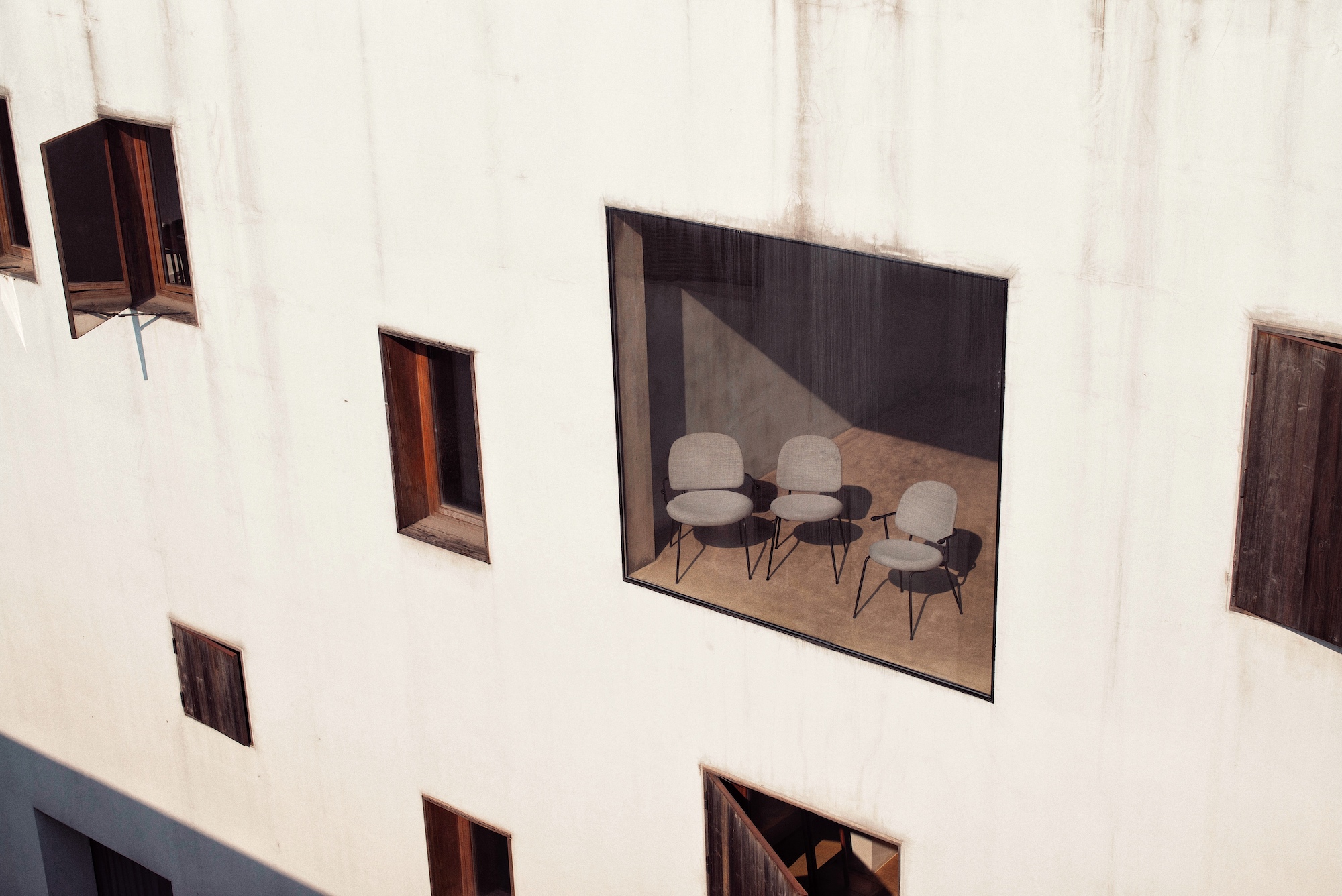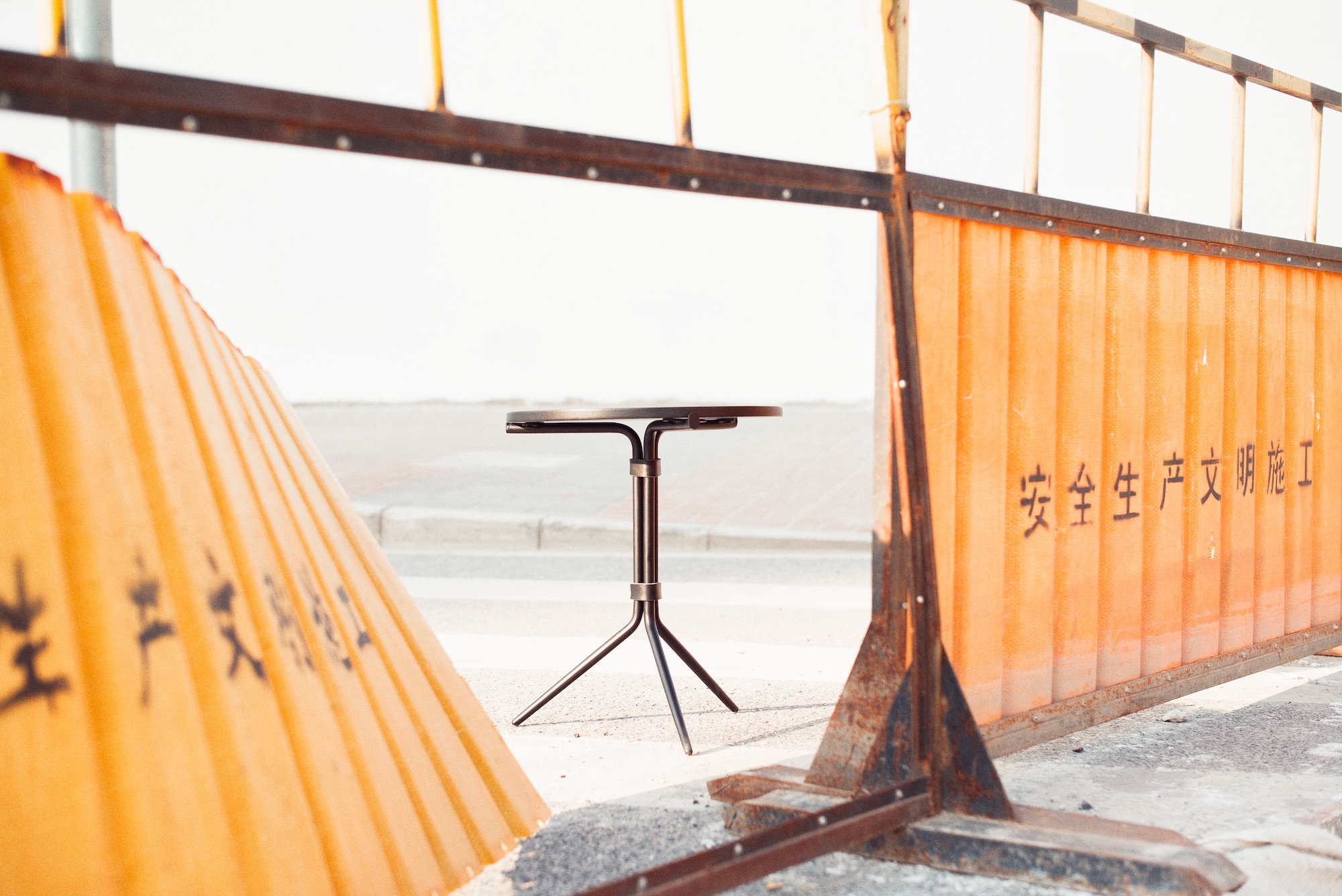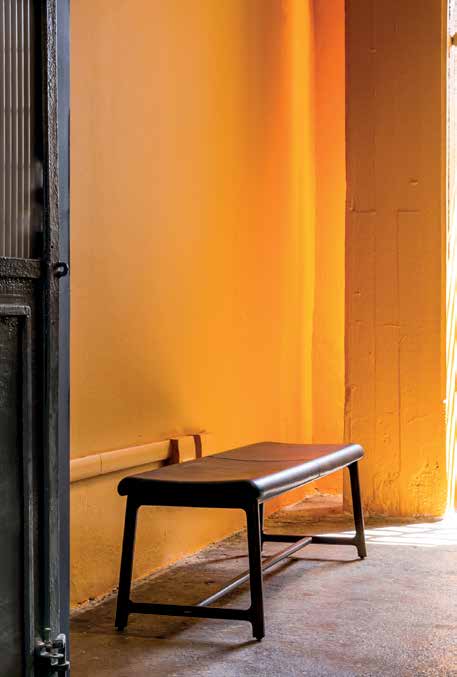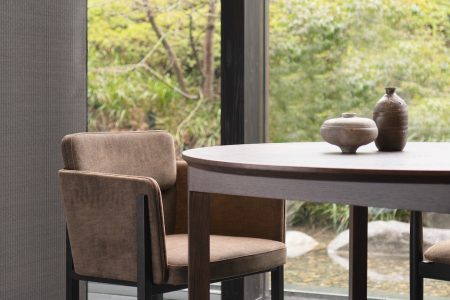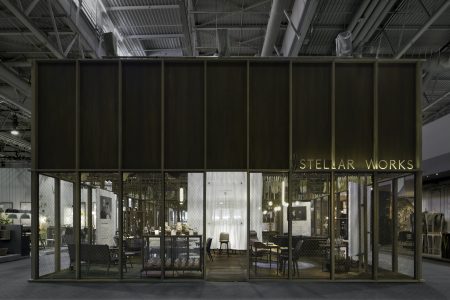
Creative Hybrids: Rossana Hu & Lyndon Neri
TLmag catches up with Lyndon Neri and Rossana Hu, founders of the Shanghai-based interdisciplinary practice Neri&Hu and creative directors of Stellar Works.
Rossana Hu & Lyndon Neri have brought their distinctive voice to Stellar Works as the company’s Creative Directors since 2015, while also keeping up with their fast-growing, multidisciplinary studio, Neri & Hu Design and Research Office. Based in Shanghai with an office in London, these two designers/architects/entrepreneurs, have helped define Stellar Works in the 21st century, strengthening its role as a design brand while contextualizing its uniquely layered and multicultural heritage that weaves in Chinese, Japanese and French DNA. This hybridization fits well with Neri & Hu’s aesthetic philosophy, allowing them to explore its potential through creative collaborations, scenographies, and new design typologies in furniture and limited edition objects and accessories.
At the heart of this relationship is Shanghai, the megacity, which for Neri & Hu is filled with so much potential to become a new reference in the design community. The rawness of old-world China combined with its thriving contemporary lifestyle, the vibrant street life and taste for luxury, few other cities challenge these extremes in such a powerful way and Stellar Works is right in the heart of this mix. This confluence of cultures was the inspiration for their Bund Collection, which launched in early 2018. The Bund is a large waterfront area in Shanghai along the Huangpu river, and one of the cities most iconic neighbourhoods. It has always been a site for trading, commerce, industrialization, and cultural exchange—and the architecture reflects these multiple transformations—with influences from Europe and America as well Japan and China’s colonial past. The Bund takes inspiration from this mix—particularly the art deco style of building that was popular in the early 20th century—with clean lines, geometric forms, and an understated, streamlined elegance.
In 2015, prior to taking on the role of Creative Directors, Neri & Hu launched the Cabinet of Curiosities for Stellar Works, a mix of artistic and design elements that perfectly embodies these designers’ ability to tell a story through design. Part display case and part guardian of secrets, the seven objects placed inside are meant to represent one of the seven deadly sins and it is up to the viewer as to how the objects are interpreted and shared. From a certain perspective, it could serve as a metaphor for entering into the world of Stellar Works, bridging the narrative and cultural heritage of their Asian roots. As they say: “You could interpret it that way. It could also be seen as a process to draw the audience of design into an object closer to themselves and allow them to engage with a brand following a path that is not often offered. It’s an effort to inject fresh content into design objects, and the narrative and storytelling become personalized within each person’s confession. There are multiple readings into Stellar Works – this is a constellation – and that’s why it’s so fascinating.”
Other collections, such as the Ming or Mandarin, exemplify Neri & Hu’s interest in breaking down preconceived ideologies to fit with new ways of living. Through subtle formal and aesthetic adjustments, the Ming Chair touches on the stately elegance found in Imperial Chinese style while naturally fitting into functional, everyday living.
TLmag: How does Stellar Works fit within the creative vision that you have developed as Neri&Hu Design Studio? How do you define yourselves within this relationship?
Neri&Hu (N.&H): I think Stellar Works fits very well into our overall creative vision and Neri&Hu’s plan as an architecture, interior design and multidisciplinary studio. We are interested in the opportunity to develop a vision for a creative brand and have it grow into something real, and Stellar Works is able to offer this. We see a lot of suitable and fitting elements within Stellar Works that Neri&Hu also aspires to be, such as being in Shanghai and Asia but also global and international, and really wanting to assert ourselves as a significant voice within this creative platform that negotiates between the cultural elements of Shanghai and helps to create that hybrid in all the disciplines that we participate in. So that’s how we define ourselves.
TLmag: How would you upgrade this definition (taken from the first Stellar Works catalogue): “Stellar Works stresses the sources of cultural inspirations through an aesthetic dialogue between East and West, the refinement of French and Japanese elegance and sense of beauty, the Nordic simplicity and high level of craftsmanship”?
N.&H.: We see Stellar Works as having an opportunity to create something quite unique. This is a unique voice that will speak about China and specifically Shanghai, but a China that is not yet defined in the global scene because it not seen as a creative place nor a creative culture, and so we hope to bring a new aesthetic sensibility that has not been brought yet to the furniture world. The French part is there, but in a subtle way, while the Japanese design influence – its simplicity and minimalist aesthetic juxtaposed with the rustic vibrancy of Shanghai – that will be very interesting for us. I think that will also be an interesting departure from what the world has seen today
TLmag: Elaborating on Shanghai as a city, a creative hub, a window to Asia and the world: what makes Shanghai so singular and what impact does it have on the Stellar Works vision and strategic developments?
N.&H.: Shanghai is really a crucible of everything that comes to this place right now: Crucible meaning it takes what comes, what is put in the bowl and put under fire and burned and twisted; it is consumed by people who are here and from abroad. So all the things that happen here: business, creative culture, fashion, painting, music, all are quite unique. So the whole world is looking at China and to define it somewhat and understand it and Shanghai has been brought to fore-front as the city that is most experimental and most international and so a lot of people see Shanghai as a defining voice of China, which makes the city interesting as well, and it is such an international hub with people from all over the world. Particularly interesting is the Chinese diaspora community—those who have gone abroad and come back, and whether through investments or by bringing the next generation back to develop newer platforms of what they had abroad – like the real estate companies – all of this works with the Stellar Works platform and strategy to be set up in Shanghai and we want to be consumed and to take on the challenge of this energy and the rawness of this city. Shanghai is a creative hub and it is also unique because it has a big part of the local culture that is very much thriving and vibrant. So that rawness mixed with international sophistication– you don’t know what will come out of things when you put them together.
TLmag: You took on the creative direction in 2015. You have been redefining the brand DNA, mission statement, vision for the upcoming years. What are the major challenges and recent outputs?
N.&H.: While we want to push this brand to become a total signature brand and design brand, there is also the foundation of Stellar Works which is the OEM and fac-tory component. So the contract part of the business needs to be addressed and in doing so we may be pulled back a bit on how we could exert our full energy on the creative direction of the design brand be-cause it is embedded in this juxtaposition. It is hard to balance both and so that balance is one of the most important things we need to overcome. On the sales and business side, we want to start defining Stellar Works more profoundly in the retail segment on a global scale by establishing retail spaces and offering customers a more engaging brand experience.
TLmag: How would you contextualize the brand Stellar Works? Does it position itself as the first Shanghai-based design brand in high-end furniture design?
N.&H.: Stellar Works is not the first de-sign furniture brand but it is the first design furniture brand that is composed of international members; the owners, the Creative Directors, the designers who are part of the brand, the people who work within, this is made up of a totally international group of people, so we are the first to take on this identity and it is very much what Shanghai is about.
TLmag: How does Stellar Works embrace the level of chaos, multicultural mix-match and attractiveness of a megalopolis such as Shanghai? What’s the role that your design hub, Design Republic, can play?
N.&H.: Stellar Works definitely does take on all of those (chaos, multicultural mix, etc.) Design Republic is very much a big supporter of Stellar Works as a brand. It wants to do more for the brand and it has a dedicated space where it showcases the collections and we want to take on more marketing and PR aspects as well. So we see Design Republic as a very strong partner for Stellar Works.
TLmag: Does Stellar Works aim at enhancing high-end craftsmanship from Asia and to bring it to Europe and the world? Has the added value been put on cross-cultural Asian (Chinese, Japanese, Taiwanese…) handicraft and aesthetics based on natural materials and multiple traditional and contemporary skills?
N.&H.: Yes, we do aim to bring in high-end craftsmanship from Asia on different levels. From our role in the creative direction, we have introduced one of a kind, heritage type of crafts and bring them into the projects that we are working on, and we have been lining up new product designers and we would like to give them assignments from those two aspects—furniture and handicrafts—even if not mass production but to work on limited edition offerings for each collection.
TLmag: Could you give the key for understanding the living experience project, bringing the holistic value of the furniture to life that was a part of the Cabinet of Curiosity exhibited at Spazio Rossana Orlandi in Milan in April 2015? Does this project have a metaphoric value in your creative direction for Stellar Works or has it evolved since then?
N.&H.: We are fond of this project and would like to see it continued and we would like to see it maybe have different variations and developed over time.
TLmag: You have shared with the public your concept of an ideal house during imm Cologne in January 2015. Das Haus could be add-ed here as an illustration to your vision of the living environment, including the archetype of the memory lane, the visual tactility, the praise of shadows, the ‘reflective nostalgia’…?
N.&H.: Das Haus does represent a small slice of what we see as an ideal home and that installation was specific to the European market and design community. We brought a lot of what, in our opinion, were more Asian ways of looking at space, and we also had visuals and images of Shanghai, where we live, and our locality. There are those cultural elements and some of the fundamental beliefs of space is that history plays a big part of who were are and how we live and how we should conceive of our living space. We don’t want, nor do we share, that idea of clean slate/pure space or this idea of tabula rasa in interiors. We believe one’s dwelling space should include these personal histories and obsessions.
TLmag: What are the inspirations and the best real-life projects of Neri&Hu featuring signature collections for Stellar Works such as Ming Collection, Utility Collection, Jubilee Collection 1965-2005 and the Mandarin Collection?
N.&H.: The inspirations are not any different from all the other inspirations of our work. They come from living and experiencing life in Shanghai, and a lot of the objects we come to see, and also from a need – from the needs of the market and a need from projects we work on. For example, the Ming Collection was an attempt at a modern interpretation of a Ming Dynasty style of chair but in a totally new way of construction, detailing, and even form. We thought that kind of formal aspect that design is able to offer is interesting because even though you cannot make detailed references, it is still very much a part of that collection. Utility and Mandarin were foremost a response to our actual interior projects.
TLmag: As architects and designers, you’ve been exploring the so-called ‘Asian Aesthetics’: materials, process design and craftsmanship, involving a reflection on the history and contemporary developments of architecture, furniture design in Asia and the Western world (US, Europe). How have those ‘opposite’ continents influenced each other? How would you define Asian Aesthetics? Would it be reflected by a tangible object or by a collective experience?
N.&H.: I think anytime we are defined by boundaries and margins it immediately defies itself. Meaning, I think it is hard to define aesthetics that way. I think that aesthetics, more than anything visual is more philosophical, and so it encompasses a lot of life experience and thinking about many things—about how we live, about space, about the procession, movement, about cultural practices and habits—how people sleep, eat, drink water, brush their teeth, drink coffee, make tea, boil water. So is it defined by one object or a multiplicity of practices? I think it is more the latter. Definitely, it is a collective experience but rooted more in philosophical tenants of a group of people within a time period.
TLmag: Could you specify some typologies of furniture design and objects you’d like to explore or have already stressed in your designs? I am thinking for instance about the screens, the daybed, the tea set, the cabinet making, the paper lamps… Which ones could be relevant for future Stellar Works’ collections?
N.&H.: Yes, definitely. We are interested in cabinets and armoires like we started with Cabinet of Curiosity. We would like to bring that typology back as well as in between typologies, like a chair and table —combinations of things— like a sofa with side table, or bed with bedside table, or a table with a lamp—we are interested in hybrids the same way we are culturally a hybrid so typological hybrids interest us as well.
TLmag: This cultural dialogue between East and West is often linked to ‘clichés’ or archetypes. We’ve seen some luxury brands like Shang Xia or Jia who have positioned themselves in this sublimation of the crafts by sourcing 5000 years of Chinese history and bringing them to the contem-porary living experience. What is your ambition for Stellar Works?
N.&H.: Regarding cultural clichés, we definitely want to depart from the expected and the clichés but this is not an easy feat. We do want to be a part of history and we do want to explore ways that modern design can take historic elements and references to the future. Our ambition? I think one step at a time. We like to unearth hidden things about culture and history, so nothing that is too obvious, but bring about relevance to daily lives. We are more interested in low culture, the common China more than Imperial China. Maybe that is what sets us apart. We’ve seen so many influences from Japan and China impacting the Western world and vice versa. Just take respectively the Muji period in Japan or the Qing and Ming periods in China.
TLmag: Would Stellar Works take the same path by re-exploring crafts such as the one of Arita porcelain? Are there other potential crafts from Japan, China and maybe Taiwan you’d like to redefine with your own eyes and sensitivity, or the ones of other designers?
N.&H.: There are many crafts we would like to explore but not specifically related to historic significance and how they influence in the west. We are not scholars and are not into re-appropriating historic references, but we are interested in the dying or soon to be lost crafts that we could incorporate nicely into the products and collections. Other than Arita – similar to that history – is Jingdezhen, a porcelain town in China, Yixing, known for its red and purple clay, which we have been exploring how to use in a modern way and how it could fit in with Stellar Works, and Weifang, known for its black pottery. In addition, we are looking at cloi-sonné, the French craft decorating metal works—updating and modernizing this process as well.
TLmag: What inspired the development of the Arita Collection, the first range of objects and accessories for Stellar Works?
N.&H.: When we began working on the project, Cabinet of Curiosity, we visited Arita and we saw how the lineage and history of Arita started to flourish when China’s ceramic production was cut off from the west, so we thought this was an interesting relationship between Japan and China and Europe and that propelled us to want to work with Arita. We visited the museum and we saw the original finish of the clay and we thought bringing that original finish back would be something quite meaningful—the light blue-grey finish, which was the final design we used.
TLmag: What’s your vision of beauty (in the) East & West? Gesture, grace, poetry, painting, interiors? Are you more into artistic collaborations and installations in order to highlight the qualities and values promoted by Stellar Works as a design brand?
N.&H.: We are not quite fond of cutting the world up into East and West even though that is quite factual in how the places are located. We are interested in intersections and hybrids. In terms of artistic installations & collaborations –yes we would like to explore this and with artists who have similar visions and qualities of aesthetics that we are looking for and interested in.
TLmag: In your design philosophy, you have a quest for excellence. How does it reflect in your furniture and architectural designs? Would it mean that you’d like to couple Stellar Works with signature collections bringing more of an artistic value than just design value?
N.&H.: The art value of design objects. That is something we have been thinking about in terms of the craft. We are less interested in gallery pieces per se, but more interested in the in-between artistic objects that are for show as well as functional objects for use. How could the introduction of traditional crafts bring into play the question of where that margin lies? That is an interesting question and that could be conceived of as a design brief for a future project.
TLmag: Do you aim at developing more limited and unique pieces within Stellar Works? Customization being one of the leading act of furniture companies nowadays, it’s maybe a way to differentiate or to upgrade a design that would otherwise be seen as mainstream?
N.&H.: Yes, we are also looking at bringing a few unique pieces within the collection. Bringing about unique pieces that are more explorative and experimental. This is definitely something we would be interested in doing.
TLmag: Does Stellar Works want to become a premium/luxury brand like Shang Xia or Jia or be the first real design brand in Asia in the field of furniture design? Do you have a clear strategy on how framing future retail developments?
N.&H.: I don’t think we are looking to be a luxury brand like Shang Xia, the way that they are only gearing towards premium and almost auction type products. We do want our products to be used and embraced by designers who are looking for objects to use in their projects. So we want to be premium but we are not luxury.
This article is part of TLmag Special Edition Stellar Works: Asian Sensibility, Timeless Craft
